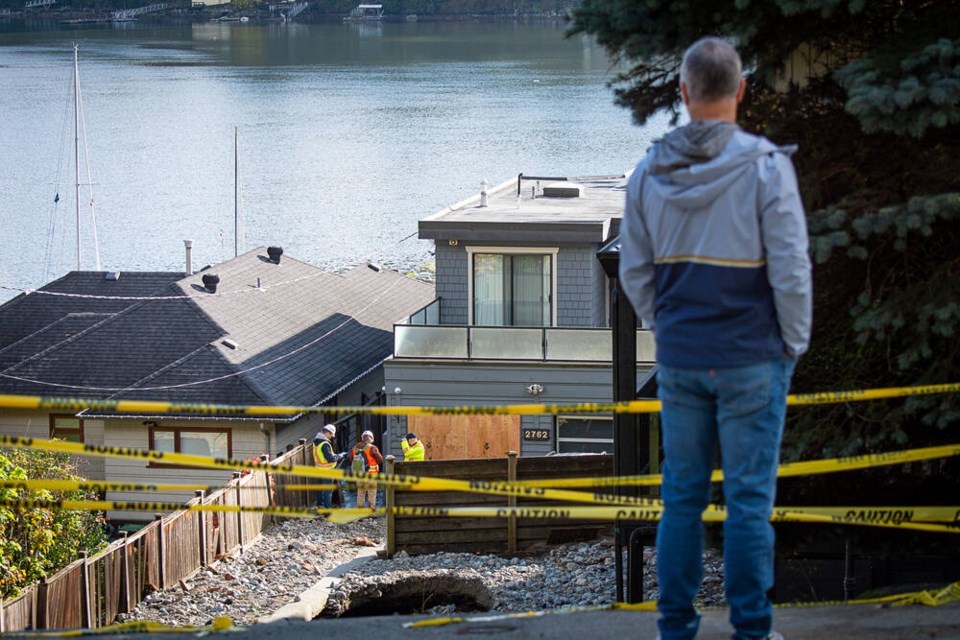Housing remains a top-tier issue in B.C. given sky-high prices that have ramped up affordability pressures on renters and first-time homebuyers. It has spurred a flurry of policy responses aiming to increase new housing supply—including substantial new investments and regulatory reform to speed construction of much-needed new homes.
This focus is rightly placed, and B.C. has made important policy changes to address this problem.
But one important issue affecting housing affordability has been largely overlooked until this point: the impacts of climate change.
A new report from our team at the Canadian Climate Institute shows that unless policy changes are made, B.C. could face an additional $2 billion in average yearly damages from building new homes in areas at high risk from climate-fuelled wildfires and floods. B.C. faces the steepest bill by far relative to other provinces, making up more than two-thirds of new national losses by 2030.
Those are significant numbers that will have real consequences on affordability. They threaten to increase the cost of living for everyone, adding to bills—both personal and public—for repairs and replacement, rising insurance premiums and taxpayer-funded disaster recovery efforts.
Simply put, the most affordable home is the one you don’t have to rebuild after a disaster.
So where are the biggest risks?
For wildfires, about 92 per cent of new losses would be concentrated in just 20 municipalities across Canada. And 16 of these are located in B.C. in the Thompson-Okanagan, Northeast, Cariboo and Kootenay regions.
In total, construction of new homes in B.C. could more than triple residential damage from wildfires, adding more than $1 billion in average annual costs by 2030.
For flooding, most of the projected $1.1 billion in losses come from additional housing development in the Lower Mainland and the southwestern corner of the province.
The good news is that only a small fraction of the new homes needed to improve affordability are likely to be built in high-hazard zones. Redirecting just six per cent of that housing to safer ground could save up to 97 per cent of the future costs from flooding in B.C.
Governments have practical ways to do this, which involve little to no additional government spending and will not reduce overall housing supply.
First, both the federal and provincial governments should steer housing and infrastructure funding away from high-hazard zones to areas of low risk. The B.C. government should update its housing and infrastructure policies to guide provincial investments to safe areas, outside flood and wildfire hazard zones.
Second, B.C. should create provincial regulations to redirect new development to safer ground. For more than two decades, B.C. has left regulation to local governments, who often face technical and financial barriers. In provinces like Ontario, provincial regulation requires housing to be built in lower-risk areas, significantly reducing average flood risk there compared with B.C.
Third, federal and provincial governments should reform disaster assistance to deter risky development, signalling that new homes built in hazardous locations could become ineligible for compensation in the future. The B.C. government should also cap the assistance that a property can receive, to avoid pouring funds into repetitive cycles of destruction and rebuilding.
Finally, all levels of government should make maps of hazardous areas publicly available, and mandate the disclosure of such information in real estate transactions so that homeowners, renters and developers can plan accordingly. Today, such information is incomplete, out of date and difficult to access.
Ultimately, we can’t afford to keep ignoring the increasingly frequent and extreme risks of climate change when building much-needed new housing. Policy to keep new homes out of harm’s way is one of the best ways to ensure more British Columbians can afford to build their lives here, now and in the future.
Ryan Ness is Director of Adaptation at the Canadian Climate Institute.
Sarah Miller is Research Lead for Adaptation at the Canadian Climate Institute



